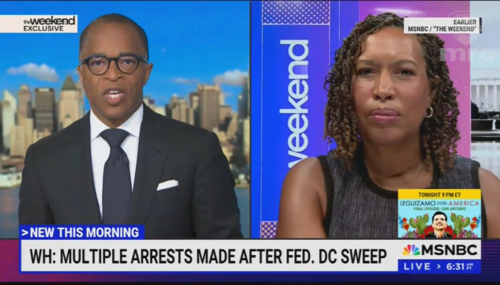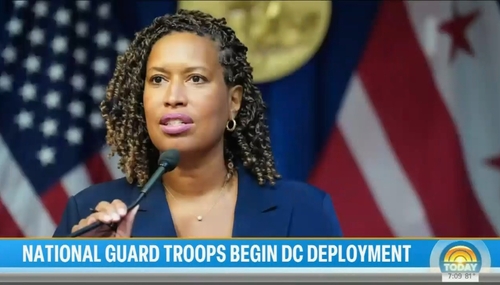Official crime data released by the FBI earlier this week reveal that nearly 11 percent more Americans were murdered in the U.S. in 2015 than in 2014.
Leon Neyfakh at Slate.com is only secondarily interested in what the just-released stats say about the direction of public safety in the nation. What's far more important to him is making sure his readers know that "the FBI’s numbers do not prove Donald Trump right," and that there are "defensible journalistic reasons for keeping that 10.8 percent murder spike out of our headlines." I suspect the author would deny it, but if it is in the headlines, people might take their media-provided blinders off and learn that the Republican presidential nominee really is right — and we can't have that.
There's also an interesting (to say the least) contrast between his story's headline ("Should the Media Downplay the New Murder Spike?") and the heavy-handed title seen in the story's browser window ("How to think about the FBI's 2015 crime statistics"). We'll think for ourselves, Mr. Neyfakh.
To be fair to Slate columnist, he at least criticized outlets, one of which includes the Huffington Post, for airbrushing the problem. HuffPo used a headline which would even have embarrassed the old Soviet Union's Pravda: "2015 Was One Of The Safest Years In The Past 2 Decades," with an accompanying concern that "the focus will more likely be on the statistical jump since 2014." That's because it's logical to look at what's happened lately, especially when what has happened represents a seriously negative change in direction.
 But contrary to what Neyfakh claims, the stats do prove Donald Trump right, particularly after one considers, according to the UK Guardian, the cities which were the biggest contributors to the murder increase: Baltimore; Chicago; Houston; Washington DC; Milwaukee; Philadelphia; Nashville; Kansas City, Missouri; St Louis; and Oklahoma City. Nine of those ten cities have mayors who either are Democrats, or, in the case of Kansas City, might as well be (Oklahoma City is the exception).
But contrary to what Neyfakh claims, the stats do prove Donald Trump right, particularly after one considers, according to the UK Guardian, the cities which were the biggest contributors to the murder increase: Baltimore; Chicago; Houston; Washington DC; Milwaukee; Philadelphia; Nashville; Kansas City, Missouri; St Louis; and Oklahoma City. Nine of those ten cities have mayors who either are Democrats, or, in the case of Kansas City, might as well be (Oklahoma City is the exception).
Seven of the ten cities fit the description Trump cited in his nomination acceptance speech in Cleveland in July of "inner cities of our country which have been run by the Democratic Party for 50 years" (the other exceptions: Kansas City for all but 12 of the past 50 years and Houston for all but four).
Trump also said that "Decades of progress made in bringing down crime are now being reversed by this Administration’s rollback of criminal enforcement." That sentence is a "we're headed in that direction" statement — and for black males, we absolutely are, if one looks at what the Guardian described as the (cough, cough) "slight increase" in the death-by-homicide rate for that group (dashed black line and red underline added by me):
Though I couldn't locate the underlying data, the "slight increase" for black males visually appears to be a bit north of 15 percent (a table seen below indicates that it's a lot closer to 20 percent), and takes us back to where that statistic was in about 2007.
FBI statistics for 2015 show that the overall murder rate is the highest since 2009, while the absolute number of murders is the highest since 2008. Further, a comparison of 2015 to 2014 indicates that, for murders where supplemental data (race, sex, etc.) was available, over 80 percent of the additional identified death toll occurred among blacks:
All of this is important context to understand the absurdity of much of what Slate's Neyfakh wrote. Pay special attention to the final two excerpted paragraphs, because they're the worst:
Should the Media Downplay the New Murder Spike?
Depending on your politics, the FBI’s new stats can look scary or meaningless. Here’s a more honest reading.
... The (FBI) results were not unexpected but newsworthy nonetheless: In the context of a presidential campaign in which one candidate has painted a picture of a nation being torn apart by violence and positioned himself as a champion of “law and order,” any new data on crime rates—what’s actually going on, underneath all the rhetoric—is valuable.
The FBI’s numbers do not prove Donald Trump right. But they also resist easy interpretation, inspiring a rather bitter tug of war between people with differing opinions about how the data should be understood.
... Where different people placed the emphasis depended on their beliefs about crime and punishment. Those who think scary year-on-year crime statistics drum up misplaced support for overly aggressive law enforcement policies played down the murder surge. ... Those who see folly in focusing on good news when thousands of people are being killed highlighted all the ways in which crime has gotten worse.
... There has been a consistent attempt on the left this year to refute any suggestion that crime is going up, provoked by conservatives like Heather Mac Donald, who have argued that activism around police killings has sparked a new era of lawlessness and violence. This is the theory known as “the Ferguson Effect,” which has become a kind of toxic shorthand for saying advocates of police reform have blood on their hands. (Note: That's because the most radical of them, including those making the ridiculous claim that everyone has "implicit racial bias," do. — Ed.)
... Crime makes people afraid, and when they hear crime is going up, they start to think the justice system should be more punitive, not less. That makes them think maybe they should vote for someone like Donald Trump ...
... there are defensible journalistic reasons for keeping that 10.8 percent murder spike out of our headlines: For instance, it’s true that the spike doesn’t seem very significant when you zoom out and look at the past 50 years. It is also true that at this point, no one knows for sure if the recent increase in violent crime will turn out to be the beginning of a serious trend. But more importantly, we know that most Americans have profound misconceptions about crime ...
... It is ironic that in 2016, left-leaning people feel compelled to soft-pedal the suffering of minorities for the sake of a broader principle intended to help minorities.
... At the debate on Monday, Trump repeated a dramatic line he has used before: “We need law and order. If we don’t have it, we’re not going to have a country.” The truth is we never did.
The "broader principle intended to help minorities" is apparently the idea of pulling law enforcement back from the proactive policing tactics Rudy Giuliani and then Michael Bloomberg used in New York to reduce that city's murder rate by about 85 percent. Good intentions don't matter here; results do, and the results of police pullbacks in Baltimore, Chicago, and so many urban high-crime areas have been disastrous. Politicians who genuinely want "to help minorities" should be embracing "law and order." If law and order isn't present, meaningful community improvements cannot occur.
Neyfakh's final statement is apparently meant to be a smart-aleck "it's never been perfect, so there" comeback to Trump's core point.
Actually, in most of America, it has been pretty close for quite a long time, in the sense that crimes have been infrequent and the perpetrators who commit the few crimes which do occur have generally been caught and punished.
Those conditions, along with conditions of general civility, do not exist in the high-crime zones on which Trump has focused. But as economist and prolific author Walter Williams, a black American who grew up in the projects of Philadelphia, has frequently stated, they once did — and based on today's excuses, one should have expected the crime problem to be even worse then than it is today. But it wasn't. Writers like Leon Neyfakh and others should be focusing on how to restore those conditions instead of scheming to find ways to shield news consumers — and voters — from uncomfortable truths.
Cross-posted at BizzyBlog.com.





